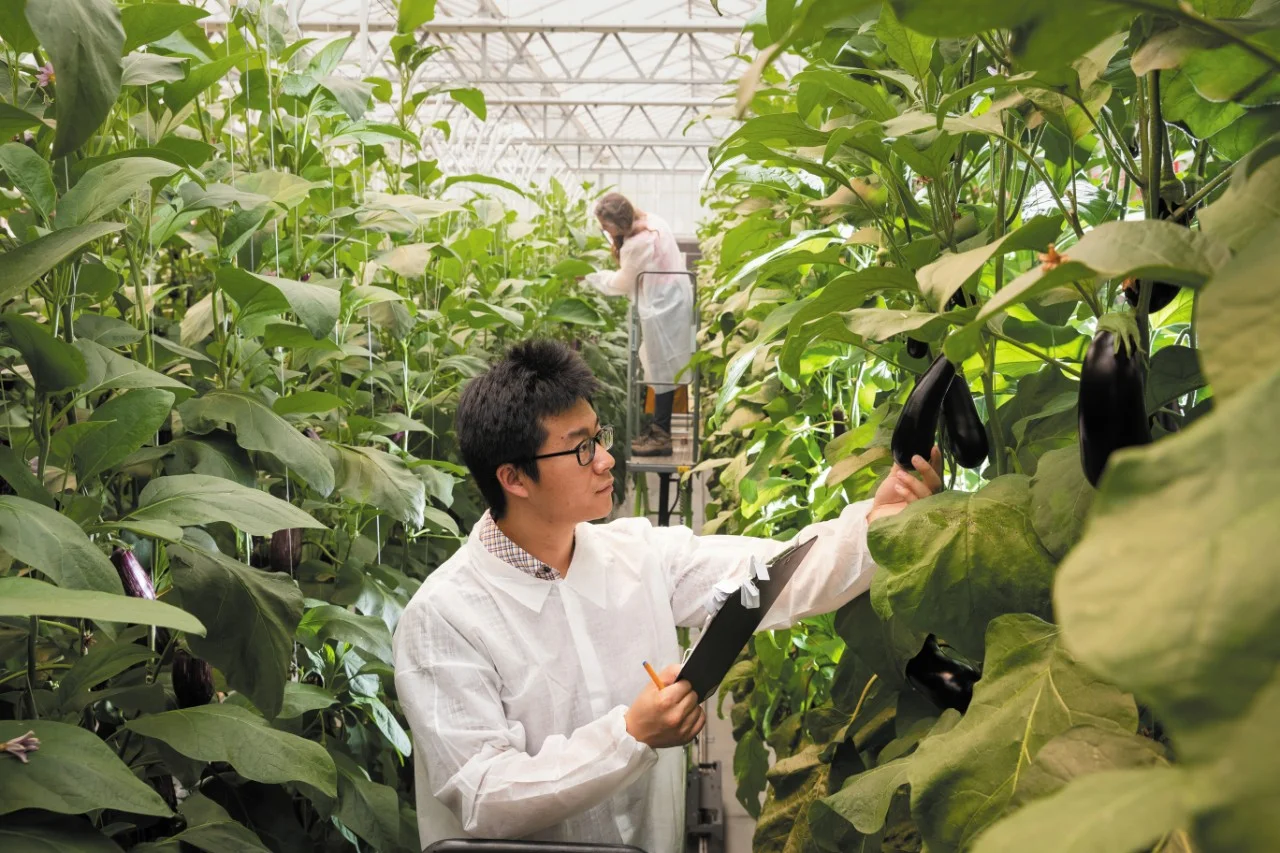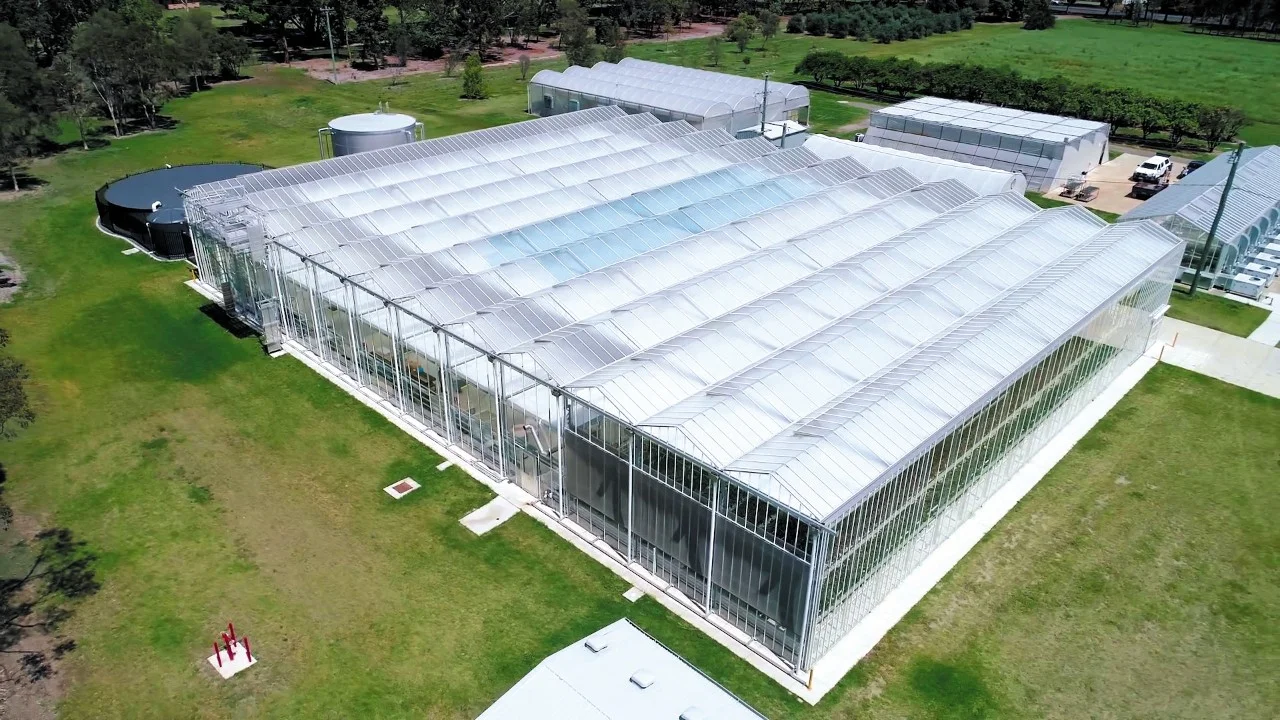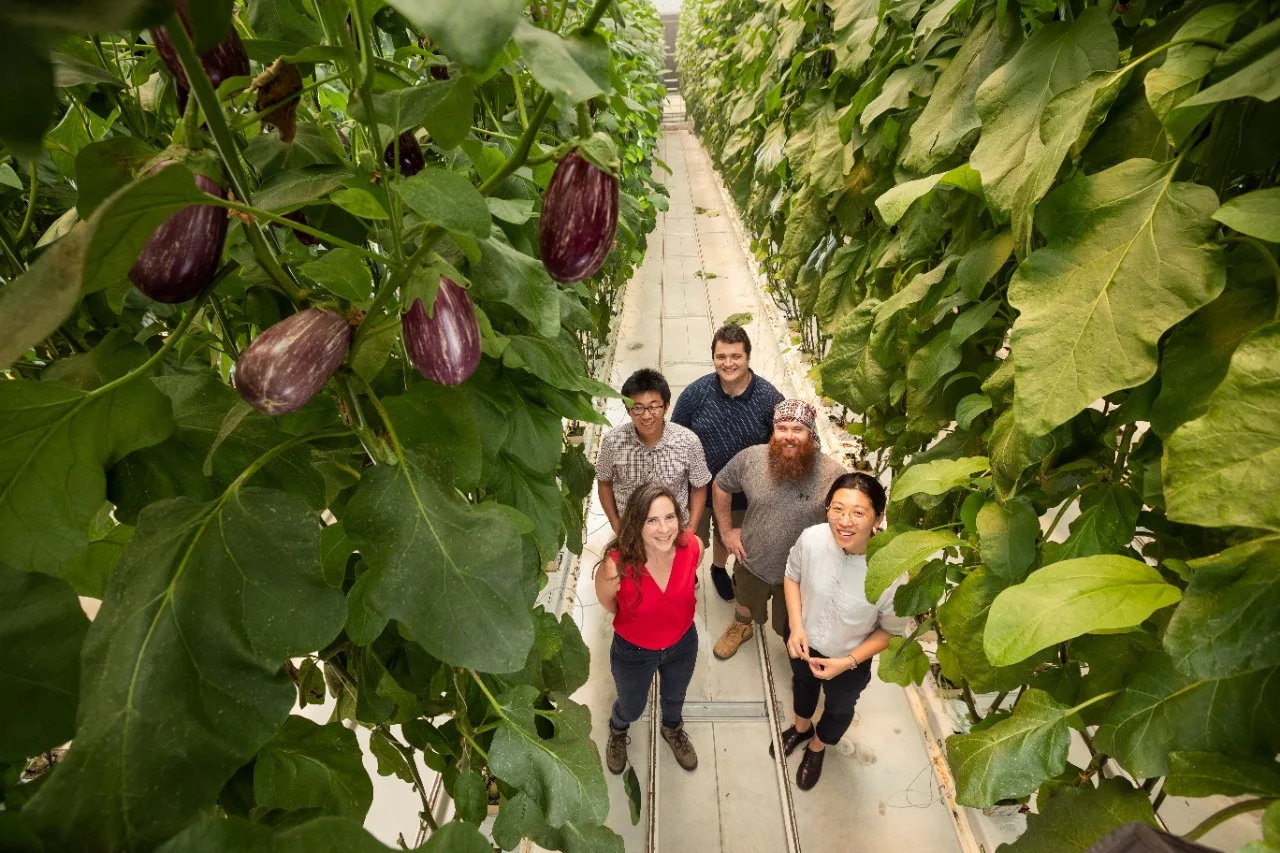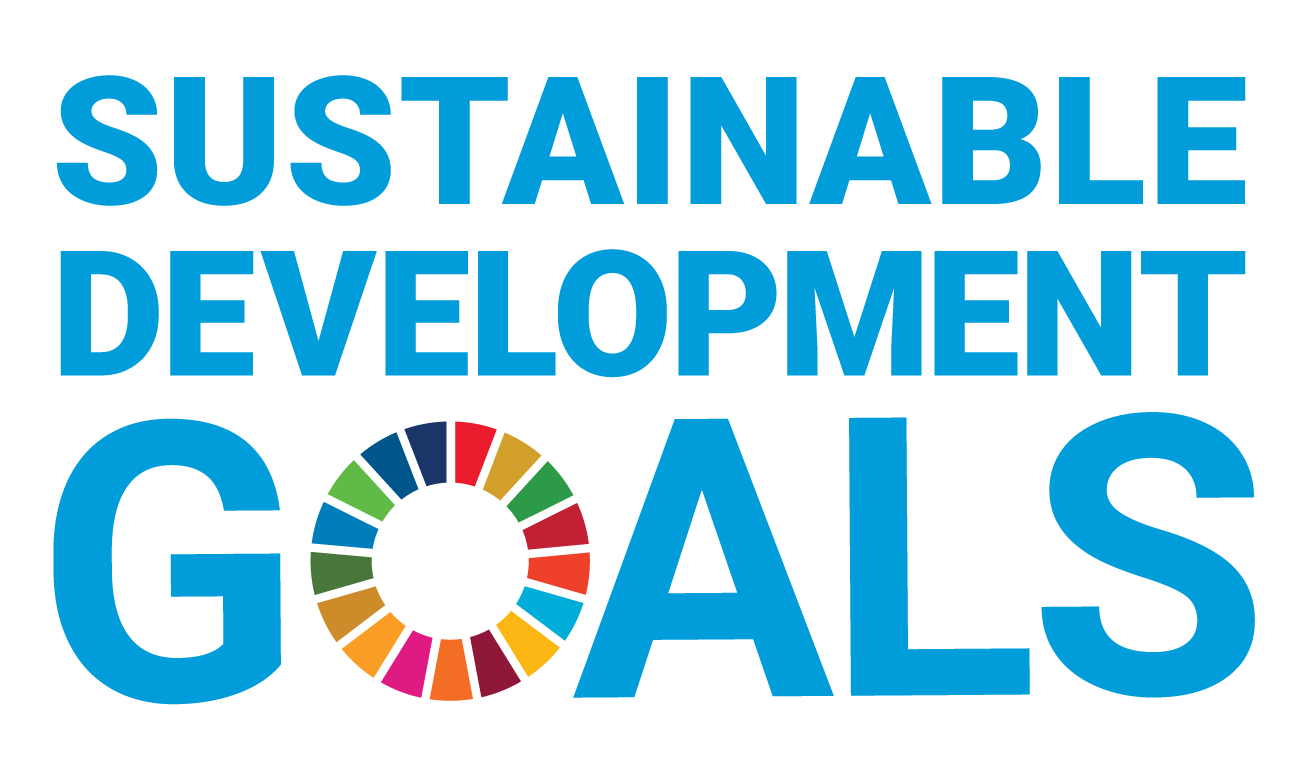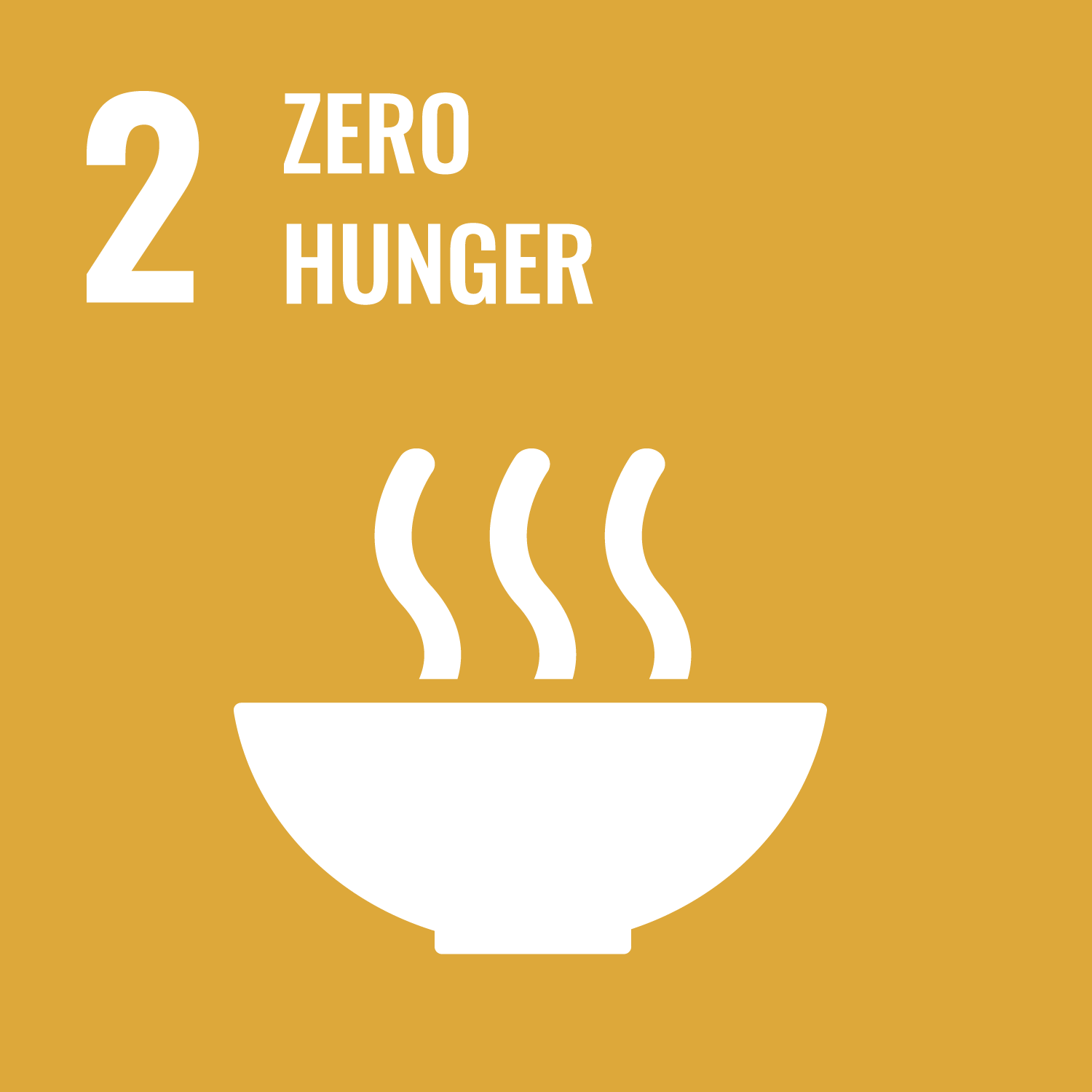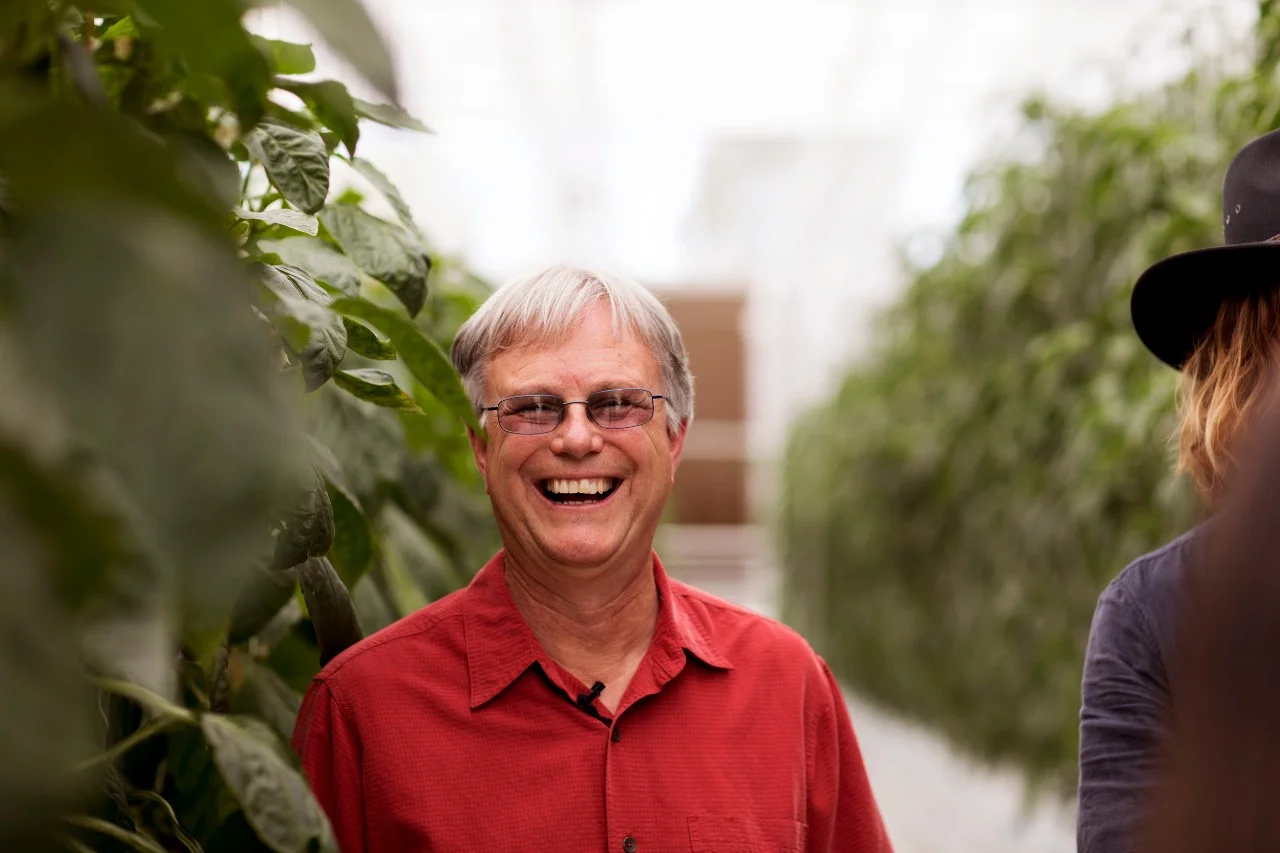Microbes at the Root of Sustainable Farming
You can search for courses, events, people, and anything else.
As Australia’s climate becomes more volatile and protracted droughts and extreme floods undermine the reliability of food production, Western Sydney University researchers have embarked on an ambitious protected cropping initiative to lay the groundwork for the future of agriculture.
Distinguished Professor David Tissue’s group at Western’s Hawkesbury Institute for the Environment is investigating how plants might respond to a changing climate, including variations in carbon dioxide levels, temperature, water and nutrient availability, and extreme climate events, in order to develop technologies that could help improve productivity in an increasingly uncertain future.
“Historically, the Australian environment has been highly variable, but climate change has increased that variability, leading to much higher temperatures and greater intensity of extreme climate events, including heatwaves, droughts and floods,” says Tissue. “These environmental challenges and a rapidly increasing population, demand action to provide food security. Protected cropping is one solution for horticultural crops.”
While conventional cropping is vulnerable to the elements, indoor or protected cropping allows food growers to control all aspects of the crop’s environment and manage resources such as water and nutrients in a more systematic way. This can dramatically improve yields and reliability, but comes at a significant increase in cost.
One of the technologies that Tissue’s team is investigating is light-blocking and light-shifting films or ‘smart glass’ for glasshouses. “The idea is that innovative smart glass technologies and films can reduce the heat load inside a glasshouse and so reduce energy costs, while maintaining or improving crop productivity and quality with reduced water and nutrient use and the possibility of renewable energy generation,” says Tissue.
Need to know
- The future of food production may lie in protected cropping.
- The Hawkesbury Institute for the Environment has opened a 1,700 m2 greenhouse to investigate ways to optimise food production.
- Photovoltaic ‘smart glass’ may help reduce a greenhouse’s energy costs.
In 2017, with the support of the industry research and development agency Horticulture Innovation Australia (HIA), the Hawkesbury Institute for the Environment established the National Vegetable Protected Cropping Centre (NVPCC) — a huge, 1,700 m2 research glasshouse with eight rooms that can be independently controlled to adjust environmental parameters such as carbon dioxide level and temperature. It also provided an ideal structure for the trial of smart glass technologies.
“We found that while the smart glass reduced energy use inside the glasshouse, it also reduced overall light intensity and some wavelengths of light, including red light which is important for photosynthesis,” says Tissue. “Two plant varieties, eggplants and capsicum, were tested inside the smart glass,” says Dr Chenchen Zhao, a postdoctoral fellow in Tissue’s lab. “The eggplants had a decreased crop yield, compared to the smaller fruit, capsicum, which were not affected as much in terms of crop yield in the smart glasshouse.”
“The reduction in light led to reduced carbon availability and subsequently reduced crop production, although it also led to lower nutrient and water use,” explains Tissue. “Importantly, we identified the limitations to the current smart glass specifications and have developed some ways to improve it.”
“The research group is working toward developing a film that will reduce wavelengths of light that generate heat, but do not affect plant development, while allowing full transmission of wavelengths that are crucial for fruit production,” says Tissue.
The NVPCC research underpins the Future Food Systems Cooperative Research Centre (CRC) at Western Sydney University in collaboration with the University of New South Wales and other institutions nationwide.
“Through the substantial support of HIA and the Future Food Systems CRC, we have been able to address many of our main objectives by involving technicians, PhD students, and post-doctoral researchers in the research, and developing new technical solutions to maximise food production while minimising resource use and costs,” says Tissue. “We are designing a next generation Smart Film based on significant progress in the smart glass project through Western’s role in the CRC, where we will further modify the technology to provide even greater benefit to crop production by leveraging greater technical capacity including robotics and hyperspectral cameras.”
Meet the Academic | Distinguished Professor David Tissue
Distinguished Professor Tissue is an international expert on the effects of climate change on ecosystems. His current research on plant response to changes in global climate primarily considers the interactive effect of elevated CO2 and associated environmental factors (e.g. temperature, nutrients and water) on leaf level physiology and its implications for plant growth.
He has worked at Free Air CO2 Exchange (FACE) sites in forest and desert environments around the world. He operates a precipitation manipulation experiment in the desert at Big Bend National Park in Texas and is a close collaborator with the USDA working on water stress response in crops including peanut.In addition, he was a founding member of PrecipNet, an international consortium of scientists studying the impact of variable rainfall on native and agricultural ecosystems.
His goal is to determine the mechanisms that regulate and integrate the developmental and physiological processes that influence leaf level carbon balance and plant growth from the cell to the ecosystem level. This information will determine the impact of climate factors on carbon and water flux and ultimately, on growth and in natural and agricultural ecosystems.
Related Articles
Credit
This research was funded by Horticulture Innovation Australia and supported by the Future Food Systems Cooperative Research Centre.
© Daniel Boud © Daniel Boud
Future-Makers is published for Western Sydney University by Nature Research Custom Media, part of Springer Nature.

